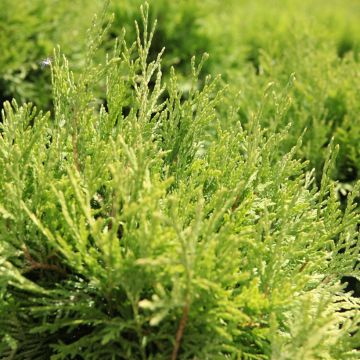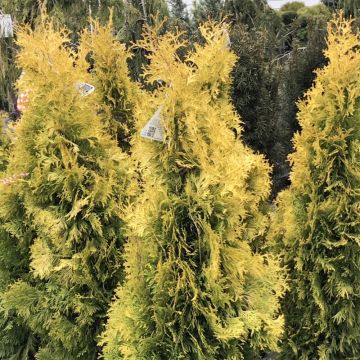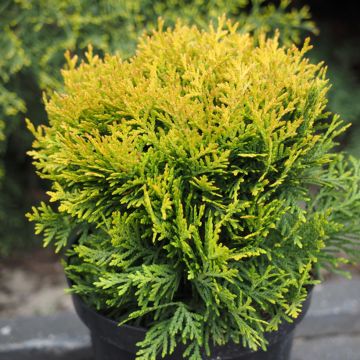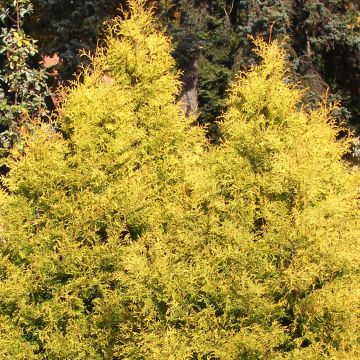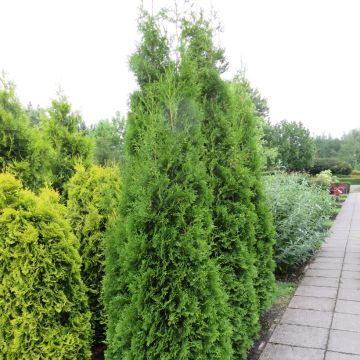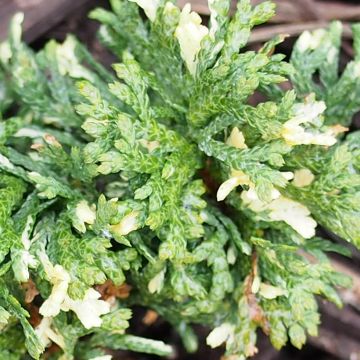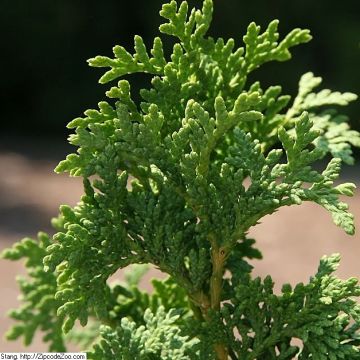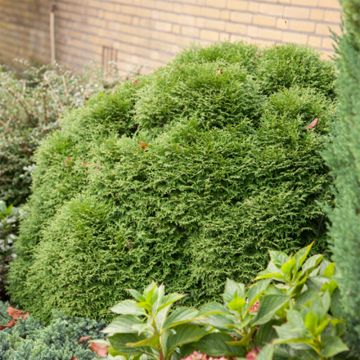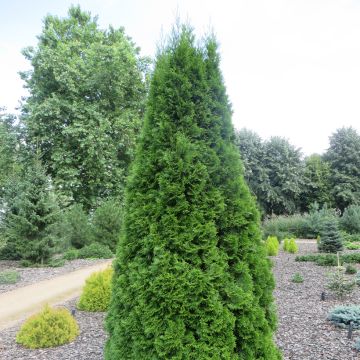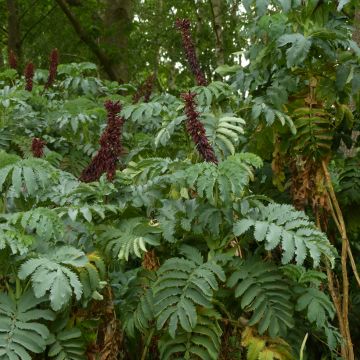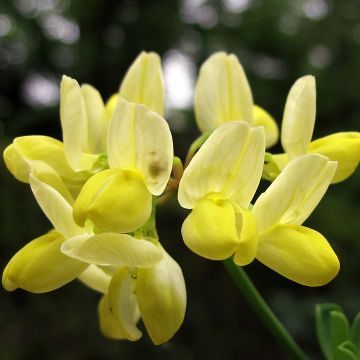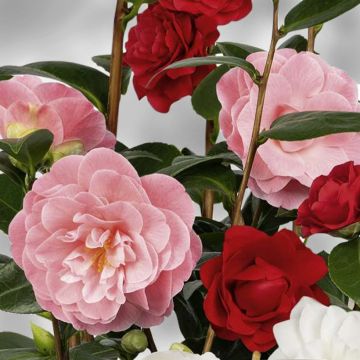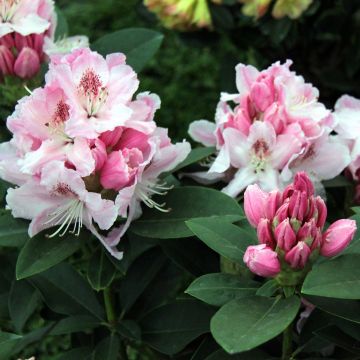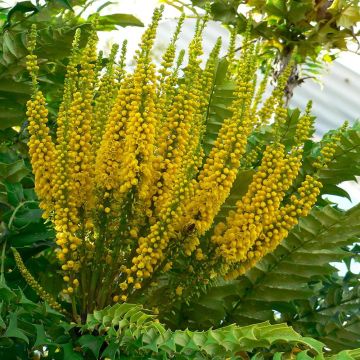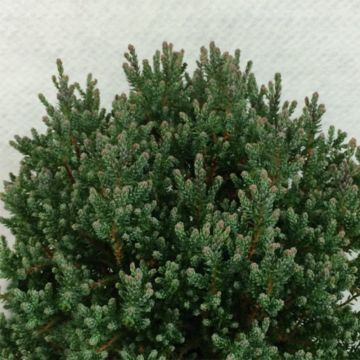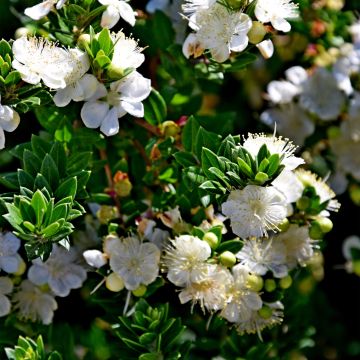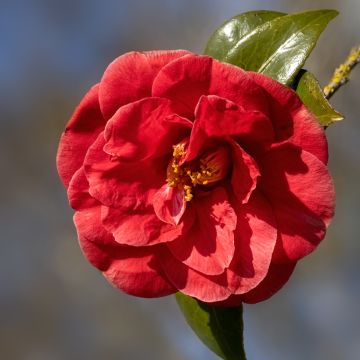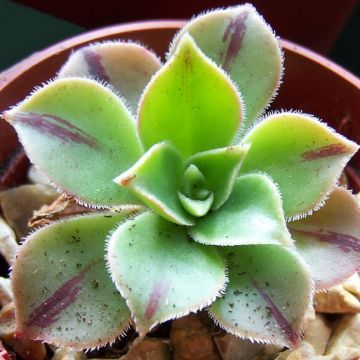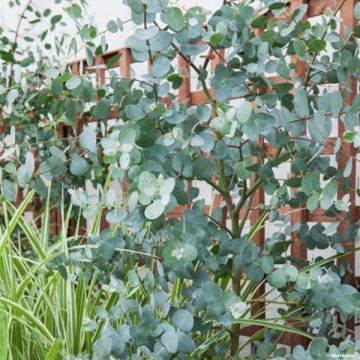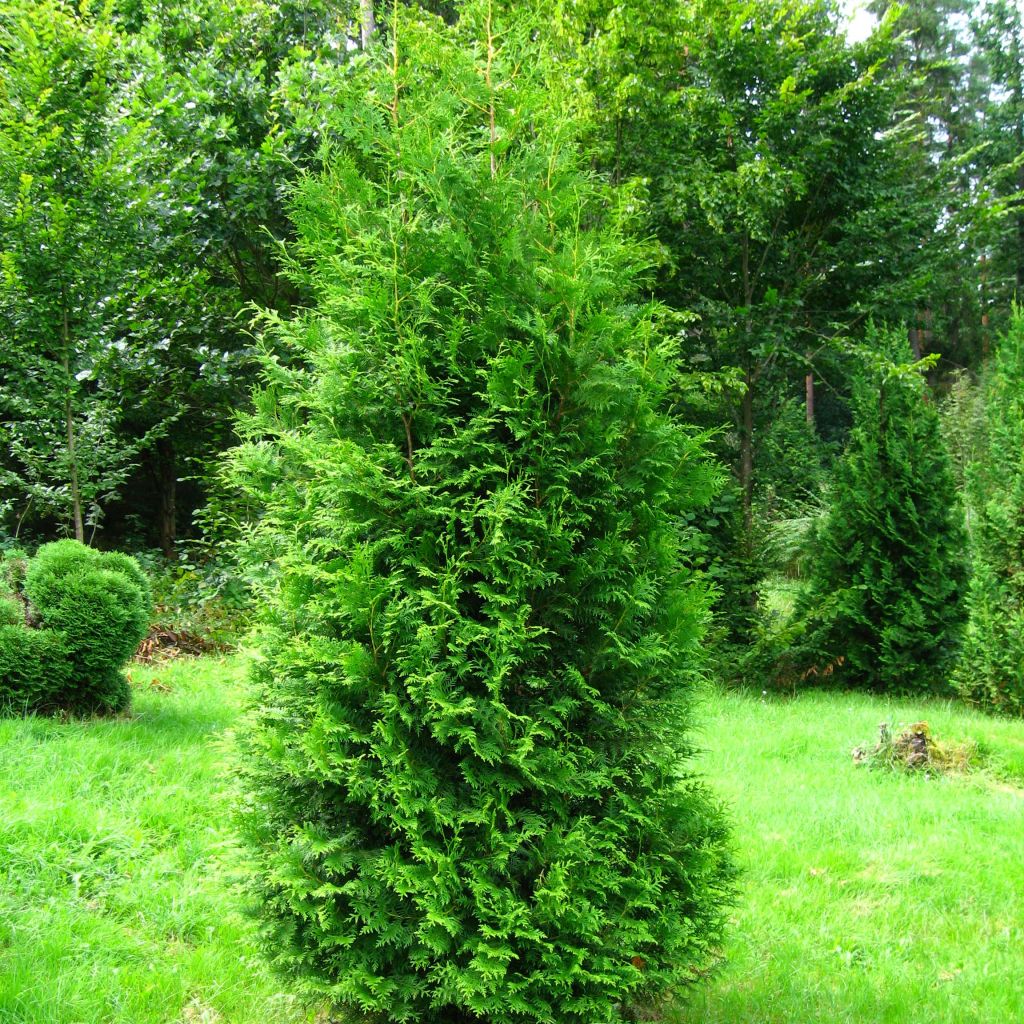

Thuja occidentalis Brabant - Canadian Arborvitae
Thuja occidentalis Brabant - Canadian Arborvitae
Thuja occidentalis Brabant
Eastern White Cedar, Northern White Cedar, American Arborvitae, Eastern Arborvitae
This item cannot be shipped to the selected country
Delivery charge from €5.90
Delivery charge from €5.90
Delivery charge from €5.90
Oversize package delivery charge from €6.90
More information
Schedule delivery date,
and select date in basket
This plant carries a 24 months recovery warranty
More information
We guarantee the quality of our plants for a full growing cycle, and will replace at our expense any plant that fails to recover under normal climatic and planting conditions.
From €5.90 for pickup delivery and €6.90 for home delivery
Express home delivery from €8.90.
From €5.90 for pickup delivery and €6.90 for home delivery
Express home delivery from €8.90.
From €5.90 for pickup delivery and €6.90 for home delivery
Express home delivery from €8.90.
Oversize package: home delivery by special carrier from €6.90 per order..
Express home delivery from €8.90.

Does this plant fit my garden?
Set up your Plantfit profile →
Description
The Thuja occidentalis 'Brabant' is one of the most planted conifers in gardens, due to its vigour and ability to withstand almost all soils and climates. This medium-sized Canadian thuja with a well-regulated conical habit grows rapidly, and its growth on multiple shoots gives it a very dense appearance. It is mainly used as a hedge, as its lush and bright foliage provides a beautiful background for all the plants in the garden. Its cultivation presents no difficulty and it tolerates pruning perfectly. When planted alone, it structurally anchors a flower bed, marks pathways, and borders the terrace with great elegance.
The Thuja occidentalis, also known as the Eastern Arborvitae or Western Red Cedar, is sometimes called the White Cedar or Broom. It is an evergreen conifer from the cypress family native to northeastern North America. It is distributed over a wide geographic area that perfectly reflects the diversity of its habitats, from swamps to cliffs. In nature, it reaches a height of 15 to 20m (65.6ft), adopting a beautiful conical habit, and a trunk covered with decorative bark that sheds in reddish-brown plates. It is a very hardy species, well adapted to temperate climates and poor, moist, or occasionally dry soils. Its almost rot-resistant, lightweight, fragrant, and easily flammable wood lends itself to many uses. It has given rise to more than 300 cultivars that have been selected for their ornamental qualities.
The 'Brabant' variety, highly appreciated since its introduction in 1984, has received the "Award of Garden Merit" from the Royal Horticultural Society of England. It will reach a height of about 4m (13.1ft) and a spread of 1m (3.3ft) after 10 years, with a regular conical habit. This extremely resistant conifer has particularly aromatic foliage when crushed, which consists of flattened twigs covered with 3 to 5mm long scales. Imbricated in each other, the leaves give the twigs a flat appearance. The young shoots are yellow-green in spring, gradually taking on their definitive light green colour. The cones are not very numerous in this variety, slender and brown at maturity, composed of 4 or 5 scales.
The 'Brabant' Western Red Cedar will find its place in all gardens, from the smallest to the largest, and will require no maintenance once well established. Its foliage, far from being dull, provides a beautiful backdrop for beds of perennials and flowering shrubs and goes well with more loose bushes, large stones, and the geometric lines of swimming pools or buildings. It bends in the wind but does not break, making it a good candidate for a windbreak hedge. The architectural qualities of conifers naturally fit in the design of a contemporary garden, which prefers the aesthetics of shapes, silhouettes, and textures over blossoms. These plants easily replace the strong presence of trimmed boxwood or holly. The key is to play with volumes and colours.
Report an error about the product description
Thuja occidentalis Brabant - Canadian Arborvitae in pictures
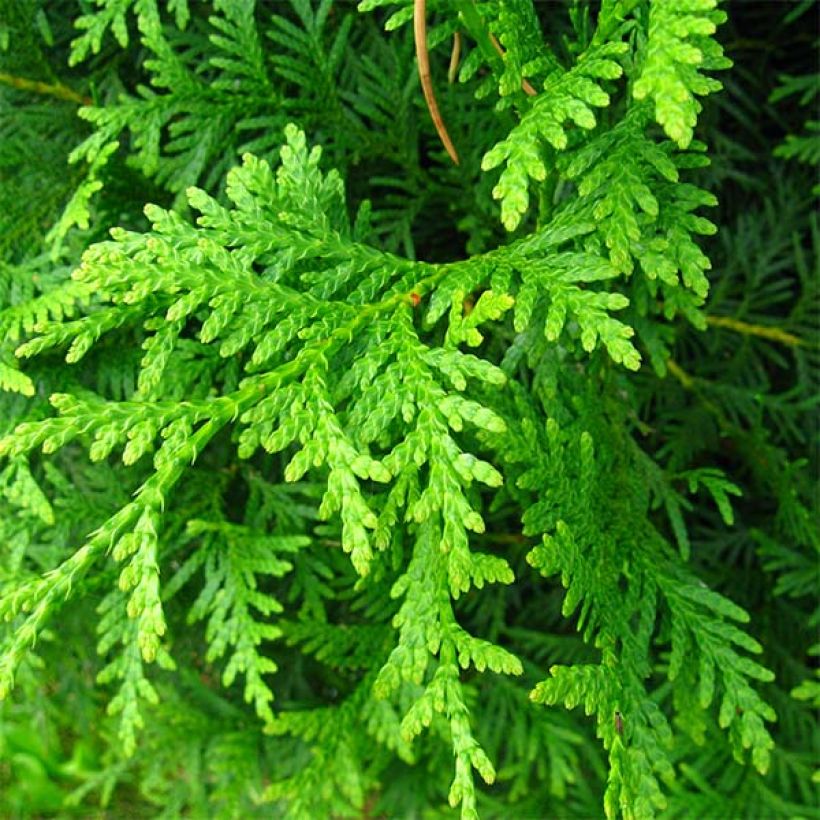

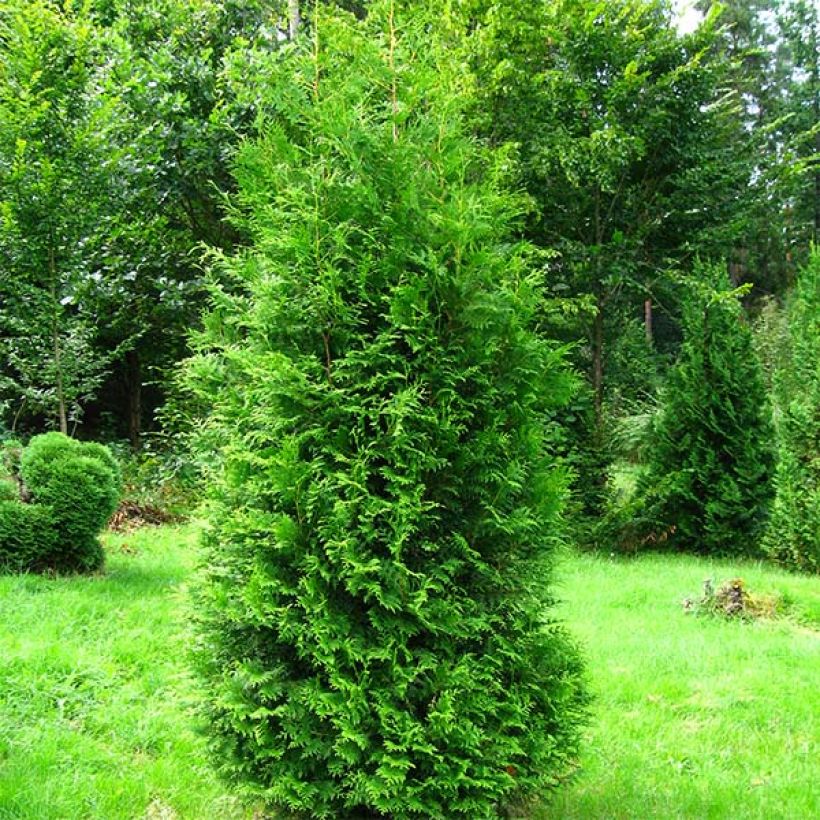

Plant habit
Foliage
Botanical data
Thuja
occidentalis
Brabant
Cupressaceae
Eastern White Cedar, Northern White Cedar, American Arborvitae, Eastern Arborvitae
Cultivar or hybrid
Other Thuya - Thuja
Planting and care
The Thuja occidentalis 'Brabant' is best planted from September to November and from February to June in deep, ordinary but loose soil, not too heavy, acidic, neutral or even slightly chalky, and moisture-retaining. It only dislikes scorching temperatures and prolonged drought. However, it requires a sunny exposure or partial shade to develop well. Soak the rootballs well before planting. Optionally, add organic fertiliser to the planting hole, and water thoroughly in the first few years or in case of prolonged drought. In very poor soil, you can apply a special conifer fertilizer every year in April and weed the soil in summer. This very hardy conifer (down to -25°C (-13°F) at least) tolerates pruning well.
Planting period
Intended location
Care
-
, onOrder confirmed
Reply from on Promesse de fleurs
Evergreen shrubs
Haven't found what you were looking for?
Hardiness is the lowest winter temperature a plant can endure without suffering serious damage or even dying. However, hardiness is affected by location (a sheltered area, such as a patio), protection (winter cover) and soil type (hardiness is improved by well-drained soil).

Photo Sharing Terms & Conditions
In order to encourage gardeners to interact and share their experiences, Promesse de fleurs offers various media enabling content to be uploaded onto its Site - in particular via the ‘Photo sharing’ module.
The User agrees to refrain from:
- Posting any content that is illegal, prejudicial, insulting, racist, inciteful to hatred, revisionist, contrary to public decency, that infringes on privacy or on the privacy rights of third parties, in particular the publicity rights of persons and goods, intellectual property rights, or the right to privacy.
- Submitting content on behalf of a third party;
- Impersonate the identity of a third party and/or publish any personal information about a third party;
In general, the User undertakes to refrain from any unethical behaviour.
All Content (in particular text, comments, files, images, photos, videos, creative works, etc.), which may be subject to property or intellectual property rights, image or other private rights, shall remain the property of the User, subject to the limited rights granted by the terms of the licence granted by Promesse de fleurs as stated below. Users are at liberty to publish or not to publish such Content on the Site, notably via the ‘Photo Sharing’ facility, and accept that this Content shall be made public and freely accessible, notably on the Internet.
Users further acknowledge, undertake to have ,and guarantee that they hold all necessary rights and permissions to publish such material on the Site, in particular with regard to the legislation in force pertaining to any privacy, property, intellectual property, image, or contractual rights, or rights of any other nature. By publishing such Content on the Site, Users acknowledge accepting full liability as publishers of the Content within the meaning of the law, and grant Promesse de fleurs, free of charge, an inclusive, worldwide licence for the said Content for the entire duration of its publication, including all reproduction, representation, up/downloading, displaying, performing, transmission, and storage rights.
Users also grant permission for their name to be linked to the Content and accept that this link may not always be made available.
By engaging in posting material, Users consent to their Content becoming automatically accessible on the Internet, in particular on other sites and/or blogs and/or web pages of the Promesse de fleurs site, including in particular social pages and the Promesse de fleurs catalogue.
Users may secure the removal of entrusted content free of charge by issuing a simple request via our contact form.
The flowering period indicated on our website applies to countries and regions located in USDA zone 8 (France, the United Kingdom, Ireland, the Netherlands, etc.)
It will vary according to where you live:
- In zones 9 to 10 (Italy, Spain, Greece, etc.), flowering will occur about 2 to 4 weeks earlier.
- In zones 6 to 7 (Germany, Poland, Slovenia, and lower mountainous regions), flowering will be delayed by 2 to 3 weeks.
- In zone 5 (Central Europe, Scandinavia), blooming will be delayed by 3 to 5 weeks.
In temperate climates, pruning of spring-flowering shrubs (forsythia, spireas, etc.) should be done just after flowering.
Pruning of summer-flowering shrubs (Indian Lilac, Perovskia, etc.) can be done in winter or spring.
In cold regions as well as with frost-sensitive plants, avoid pruning too early when severe frosts may still occur.
The planting period indicated on our website applies to countries and regions located in USDA zone 8 (France, United Kingdom, Ireland, Netherlands).
It will vary according to where you live:
- In Mediterranean zones (Marseille, Madrid, Milan, etc.), autumn and winter are the best planting periods.
- In continental zones (Strasbourg, Munich, Vienna, etc.), delay planting by 2 to 3 weeks in spring and bring it forward by 2 to 4 weeks in autumn.
- In mountainous regions (the Alps, Pyrenees, Carpathians, etc.), it is best to plant in late spring (May-June) or late summer (August-September).
The harvesting period indicated on our website applies to countries and regions in USDA zone 8 (France, England, Ireland, the Netherlands).
In colder areas (Scandinavia, Poland, Austria...) fruit and vegetable harvests are likely to be delayed by 3-4 weeks.
In warmer areas (Italy, Spain, Greece, etc.), harvesting will probably take place earlier, depending on weather conditions.
The sowing periods indicated on our website apply to countries and regions within USDA Zone 8 (France, UK, Ireland, Netherlands).
In colder areas (Scandinavia, Poland, Austria...), delay any outdoor sowing by 3-4 weeks, or sow under glass.
In warmer climes (Italy, Spain, Greece, etc.), bring outdoor sowing forward by a few weeks.

































